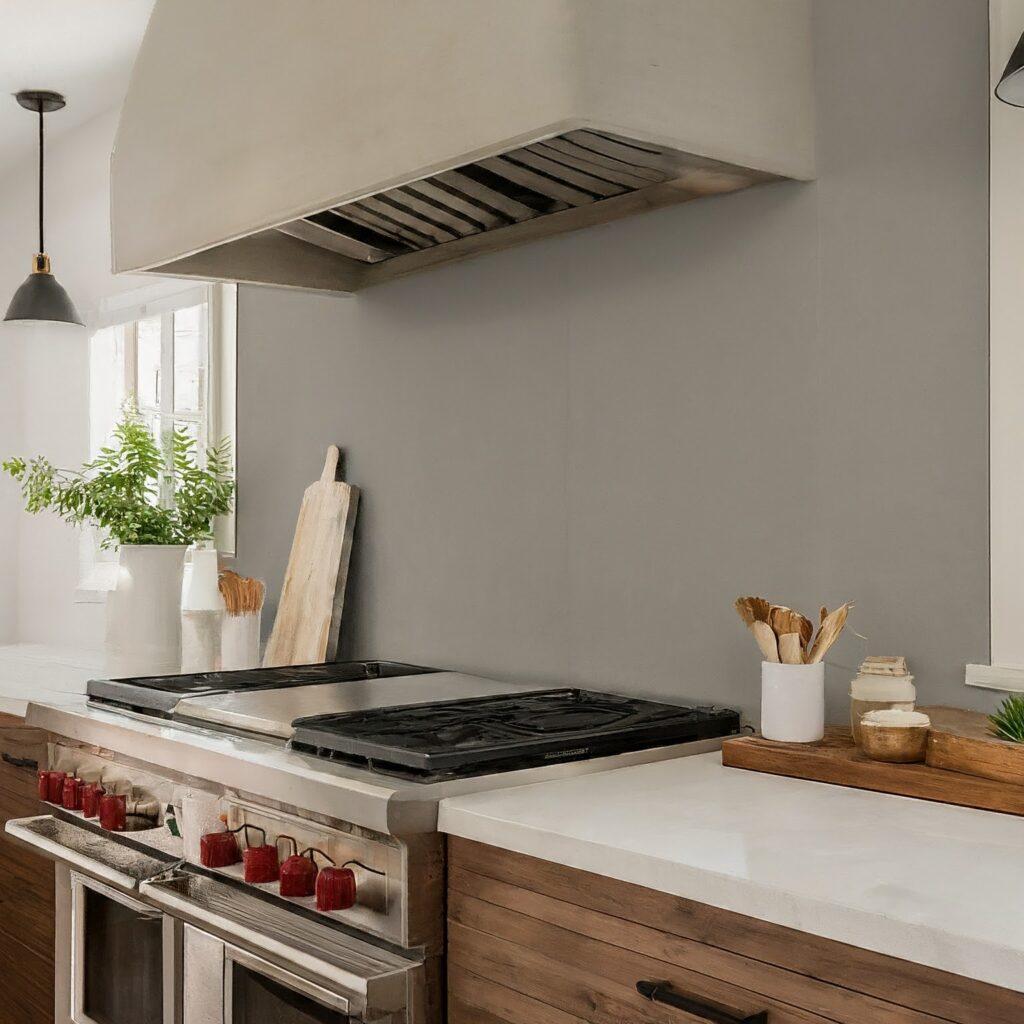Hello there! Thank you for considering our peel-and-stick backsplash.
Not sure which size and finish best reflects your culinary spirit and unique style?
Don’t worry, we’re here to assist you in selecting the perfect backsplash in just minutes!
Whether you envision a modern masterpiece or a cozy farmhouse charm, choosing the ideal fit for your kitchen walls boils down to three crucial decisions: 1. Tile size, 2. Quantity, and 3. Finish type. Let’s explore these options together and transform your kitchen into a space you’ll adore!
This guide will walk you through the choices, ensuring you find the perfect match for your space. Remember, scale and proportion are essential for creating a visually balanced and pleasing aesthetic.
I. Consider Your Kitchen Dimensions
Small Kitchens:
- Height: If your backsplash wall height is under 3 feet, smaller tiles (6″ x 6″ or 9″ x 9″) can create a cohesive look. Avoid exceeding 3 rows of tiles to maintain a balanced feel.
- Width: For wider walls, you can experiment with 12″ x 12″ tiles, keeping the height to 2-3 rows to avoid overwhelming the space.
Large Kitchens:
- Height: Taller walls like 4 feet or more offer more flexibility. Here, you can explore both smaller and larger tiles. Smaller tiles (9″ x 9″) create a classic look, while larger ones (12″ x 12″ or 15″ x 15″) add a modern touch.
- Width: Utilize the width to experiment with different layouts. Larger tiles spread horizontally can accentuate the spaciousness, while smaller tiles can add texture and visual interest.
Think About the Overall Look:
Minimalist & Modern: Larger tiles (12″ x 12″ or 15″ x 15″) contribute to a sleek and contemporary aesthetic. Pair them with clean lines and uncluttered countertops for a polished look.

Rustic & Farmhouse: Smaller tiles (6″ x 6″ or 9″ x 9″) lend a charming and vintage vibe. Combine them with natural textures like wood and exposed brick for a cozy feel.

Bold & Statement-Making: Don’t shy away from larger tiles (12″ x 12″ or 15″ x 15″) in vibrant colors or patterns to create a dramatic focal point in your kitchen.

Relationship with Other Design Elements: Consider the scale of cabinets, countertops, and appliances. Aim for a harmonious balance where the tiles neither seem dwarfed nor overpower other elements.
II. Measuring Up: How Many Tiles Do You Need?
Grab your measuring tape and get ready to unleash your inner designer! To calculate the number of tiles needed, follow these simple steps:
- Measure the area you want to cover: Measure the height and width of your backsplash area in inches. Multiply these two numbers to get the total area in square inches.
- Divide by the individual tile size: Divide the total area (in square inches) by the size of each tile (e.g., 6 inch x 6 inch for a 6″ x 6″ tile). This will give you the approximate number of tiles needed.
- Add 10% for wiggle room: Remember, unforeseen cuts and adjustments might be necessary. To play it safe, add 10% to the calculated number of tiles.
- Bonus! We’ve got your back (literally): To ensure you have enough tiles for a stress-free installation, we’ll include a few extra tiles (Max upto 3), absolutely free, on top of your purchased quantity. That’s peace of mind you can stick with! To avail this offer please mention the number of extra tiles you need in the notes section on checkout page
So, whether you’re a seasoned DIYer or a first-time backsplash adventurer, we’ve got you covered. Grab your measuring tape, visualize your dream design, and let’s get started on creating a kitchen that reflects your unique style.
III. Matte or Glossy: Setting the Finish Tone
Matte: Think cozy farmhouse charm or timeless elegance. Matte finishes gently diffuse light, creating a warm and inviting atmosphere. They also effortlessly hide minor imperfections and fingerprints, making them ideal for busy kitchens.


Glossy: Embrace vibrant modernity or airy spaciousness. Glossy finishes brilliantly reflect light, opening up your kitchen and highlighting bold patterns or textures. Fingerprints might be more noticeable, but the added sparkle can be worth it for some!


Key Differences
- Light Reflection: Matte absorbs light, creating a softer feel. Glossy bounces light, making the space appear brighter and larger.
- Texture: Matte has a smooth, velvety texture. Glossy offers a sleek, mirror-like sheen.
- Maintenance: Matte hides imperfections and fingerprints better. Glossy may require more frequent cleaning.
- Style: Matte leans towards classic, rustic, or traditional looks. Glossy embraces modern, contemporary, and bold aesthetics.
Consider your preferences:
- Do you prefer a warm and inviting ambiance or a bright and airy feel?
- How much maintenance are you comfortable with?
- What kind of style are you trying to achieve in your kitchen?
Ultimately, the best choice is the one that speaks to your heart and complements your unique vision.
Unique Considerations for Our Seamless Tiles:
- Larger tiles tend to showcase patterns or textures more effectively due to the increased surface area.
- Seamless tiles create a more uninterrupted visual flow, so consider how individual tile size impacts the overall impression.
- Smaller tiles can add subtle texture and visual interest, while larger tiles offer a cleaner and more modern aesthetic.
Remember, there’s no one-size-fits-all solution. This guide is a starting point to help you make an informed decision. If you’re still unsure, feel free to reach out to our friendly customer service team for personalized advice!